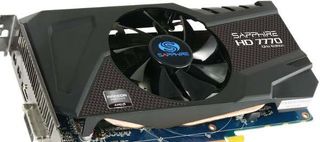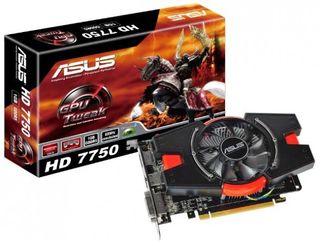Radeon HD7700 series review round-up

Been holding off on a graphics upgrade until you see what AMD can do with its Graphics Core Next (GCN) chips at a price that's actually affordable? Today's the day of the big reveal as it officially launches the budget-oriented Radeon HD7770 and HD7750 cards.
They're GCN for less than $160/£125, potentially as low as $109/£80, give or take a few non-specific currency units either way once the cards actually appear on sale. Does the launch mean AMD now dominates the low end GPU market as well as it has the high?
Recap time: last month, AMD became masters of the graphics universe with its Radeon HD7980 and HD7950 'Tahiti' cards . As a debut turn for its new GCN architecture they couldn't have done better, at least as far as performance goes. Price wise... at upwards of £450 for a single card it's a tough sell to anyone who's not running multiple monitors, stereoscopic 3D or a giant 4K screen.
Ranking below these HD7900 cards, however, there's an HD7800 'Pitcairn' chip planned for the £150-£250 range and these: the HD7770 and HD7750, codenamed 'Cape Verde'.
Internally, the new cards are very similar to the Tahiti ones. You can read our architecture overview here , but the highlights as far as the Cape Verde cards are as follows:
- 10 'Compute Units' for a total of 640 processor cores in the HD7770, eight CUs/512 cores for HD7750 (compared to 32/2048 for HD7970)
- 40/32 texture units (HD7770/HD7750)
- 16 ROPS (both)
- 1GHz/800MHz core speeds (HD7770/HD7750)
- 4.5GHz equivalent memory speed (both)
- 128-bit memory bus (both)
- 28nm process (both)
- Support for DX11.1 (both)
As you can see, the HD7750 is basically an HD7770 with a couple of CUs disabled and a lower clockspeed. Both chips have high resolution (4K) display support for cinema resolution HD TVs which are due this year, and AMD's impressive power saving technology ZeroCore. They also both support hardware acceleration of video encoding, although there's no applications which make use of this yet.

Here's the bit you've been waiting for: how do they perform? Not terribly well, by all accounts. With the caveat that GCN is still very new and we're expecting to see much better performance as the drivers mature, early reviews suggest that if you've been holding out for superfast benchmarks for under £100, you're going to be disappointed. According to most sites who've seen the cards so far, the HD7770 is beaten in most games by the older HD6850, which you can pick up for less than £90 in some places. Given that the HD6850 is the slowest card I'd recommend for gaming at the moment, it means that unless there's some truly exceptional driver optimisation still in the works, HD7700 is a massive disappointment for those hoping they'd be able to save a lot of money on their next build.
The biggest gaming news, reviews and hardware deals
Keep up to date with the most important stories and the best deals, as picked by the PC Gamer team.
Worse, it doesn't bode well for the HD7800s either: AMD's current strategy seems to be about matching the last generation of cards for their price/performance ratio, rather than moving things on a bit. Stick with this strategy, and I can't help feeling that they're leaving wide goal open for NVIDIA's forthcoming mainstream Kepler chips – if you've held off upgrading this long, you might as well wait a bit longer, after all.
Here's what the web has to say:
- Anandtech thinks the HD7700 has potential thanks to overclocking ability and low power use, optimistically mooting that 'there's no such thing as a bad card, only bad prices'.
- TechRadar topttt generously calls it a 'reasonable success'.
- Hexus goes for the tautologous 'MSRP prices bring meatier GPUs into play'. Yes, quite.
- Tom's likes the HD7750 for a living room PC, where its 'attributes are particularly viable'. Personally I'd still go for the cheaper Fusion plus asymmetrical CrossFire option.
- Hardware Heaven , however, bucks the trend and awards 9/10 to an overclocked version of the HD7770 from Sapphire.
As ever, I'll save a final judgement until the review in the mag.
Most Popular


